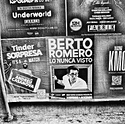In looking at which sampling rate to use in scanning, doesn’t it depend on the resolution of your final product?
yes, the final product of course changes scanning requirements. a 4x6" print needs much less (5 times less) resolution than a 20x30" print of the same negative.
If your printer prints at 600dpi, for example, and you are scanning an 8x10 neg to make an 8x10 print, then you should scan at 600dpi.
here is where things get fuzzy and it's useful to differentiate between ppi and dpi.
in the digital file, the image is described in ppi, where each pixel can have several million (or trillion) different colors.
in the printer, the dots are described as dpi, where each dot comes from one ink, so usually 4 to 12 colors.
that means to mix one pixel in the image, you usually want to use several dots in the printer.
in the file, you usually want 200-400ppi for a high quality print, with 300ppi often quoted as the standard.
in the printer, most people aim for more than 600dpi for a high quality print, usually around 1200-2500dpi.
Likewise, if you are scanning 120 film to print a 10 x 10 print on the same printer, then the 120 film would need to be scanned at 2” x 5= 10 or 600 x5 =3,000 dpi.
ok, let's use this as an example:
If we aim for a a 10x10" print of highest quality, let's say for a epson inkjet printer, I'd say we should have a file with about 360ppi (the printer will print at 1440 or 2880dpi).
so that means a file with 360 x 10 = 3600pixels width
a 6x6 neg is 2.2" inches wide, so we'd need to scan with 3600 / 2.2 = 1640ppi on the scanner.
in practice, no scanner will reach the full resolution at native scanning, so if I want absolutely best results, I would aim for about 20-30% oversampling, i.e. 2000-2400ppi scanning resolution.
In practice the term resolution is even more complex. for example 1800ppi on an Epson V850 will look noticeably softer than 1800ppi on a Nikon 9000 or an Imacon 848 or my dokko scanner.
there are also other factors like scanning noise, dynamic range, color etc, which are hard to put in simple numbers (or rather, every manufacturer uses the method that makes their product look better than it is).
but in practice, the standard version of aiming for around 300ppi on print size, and using a high quality scanner and printer with careful processing will give excellent results.









